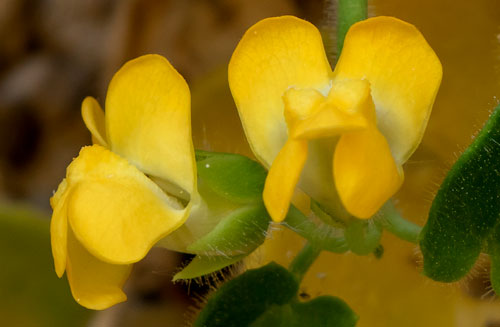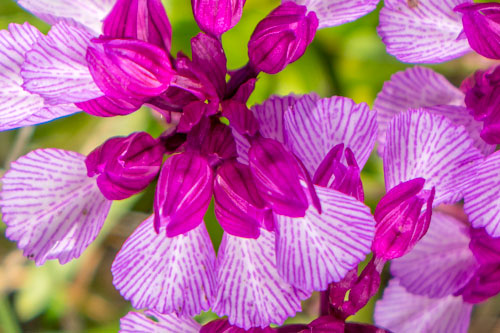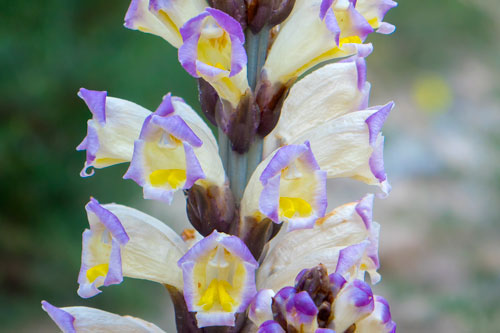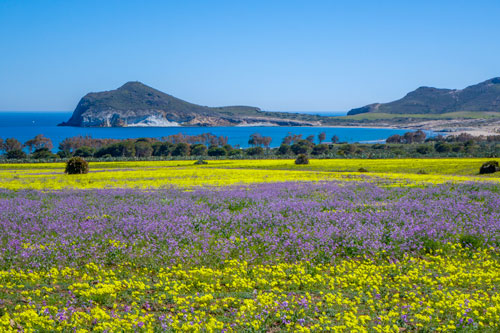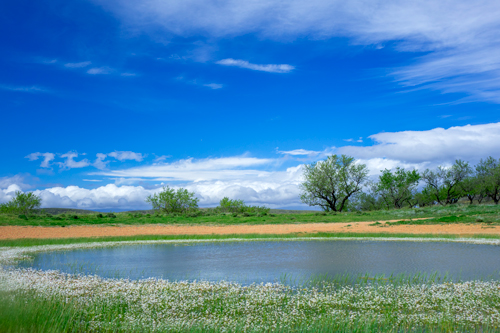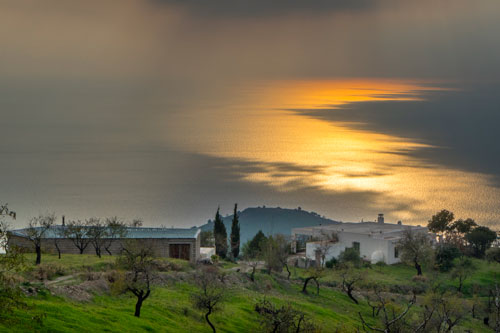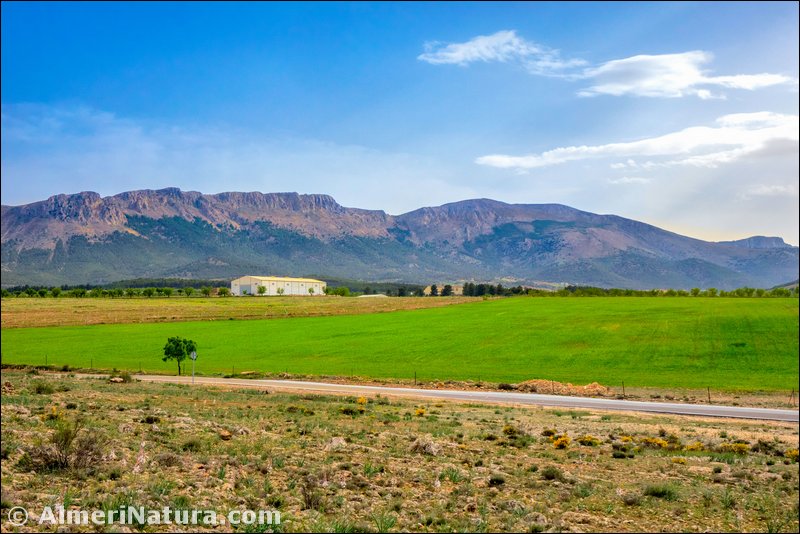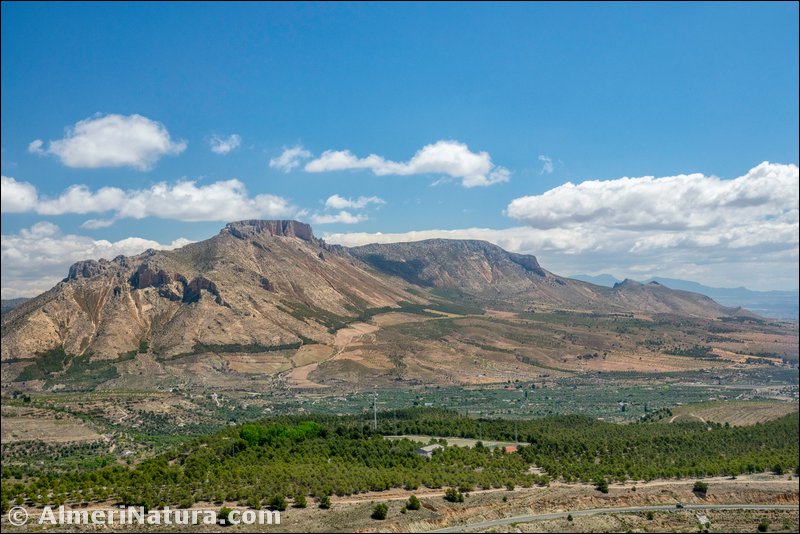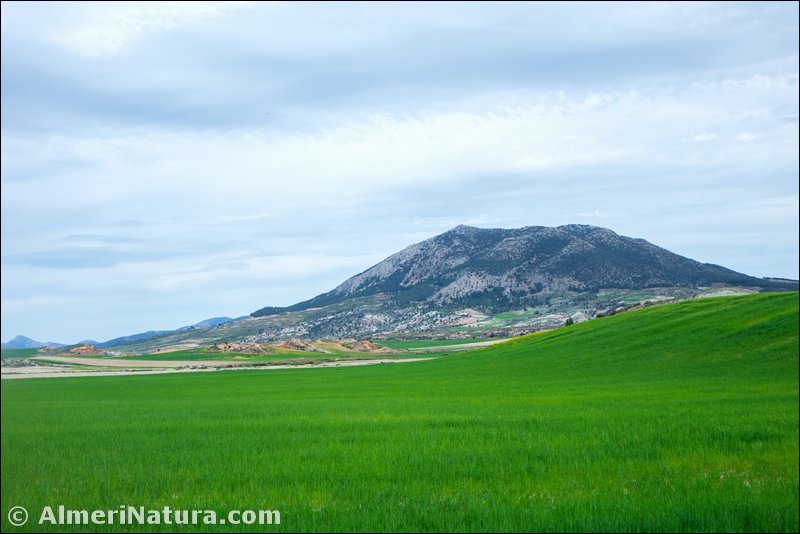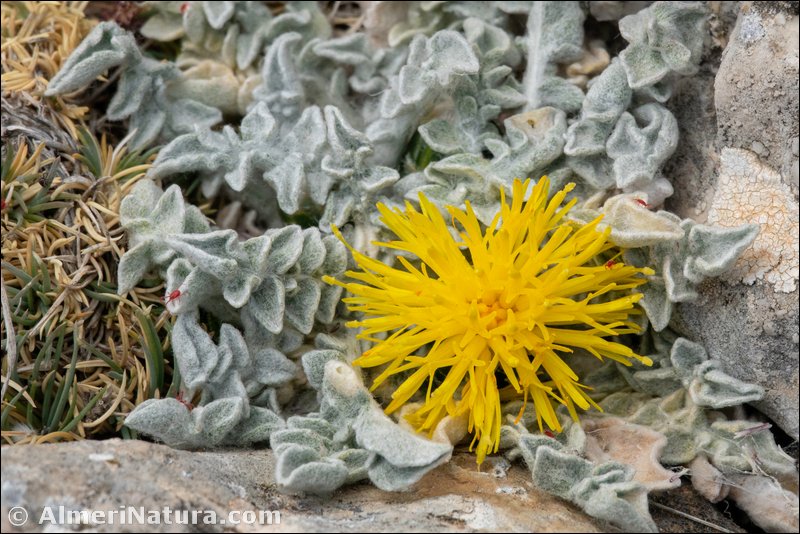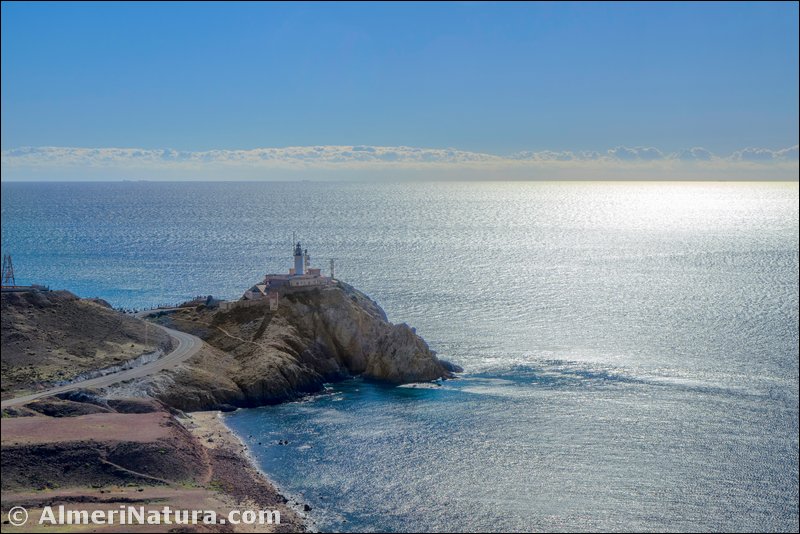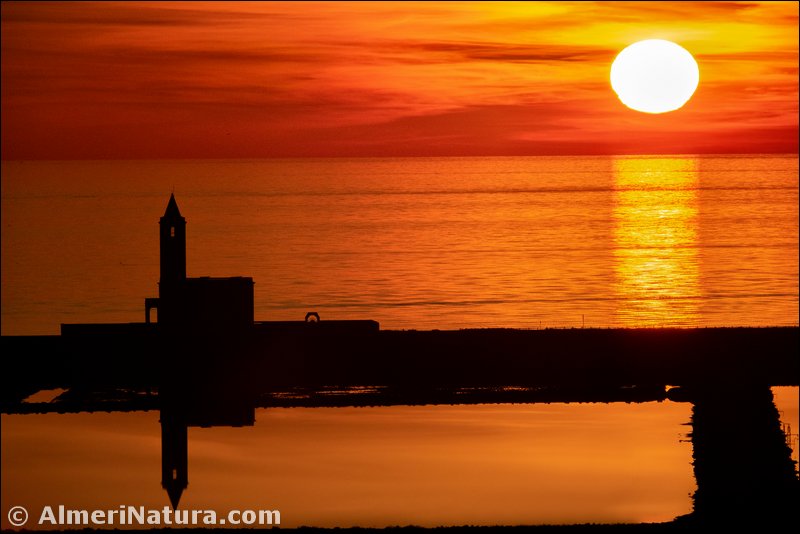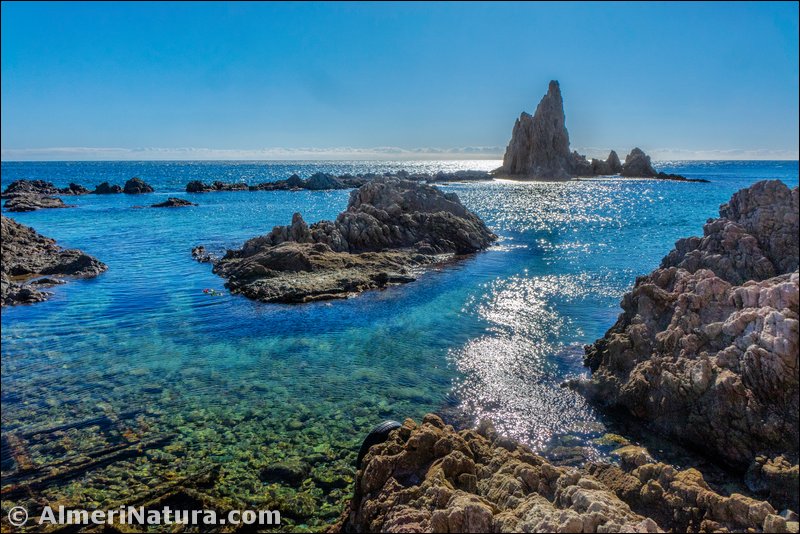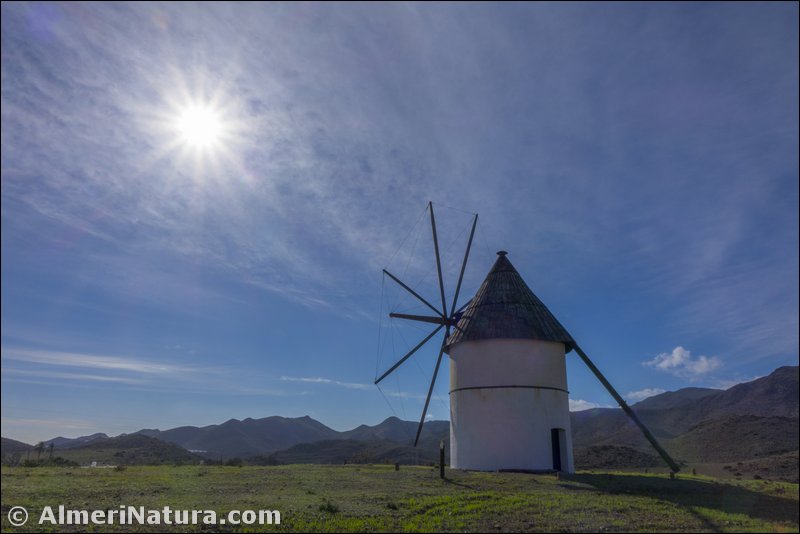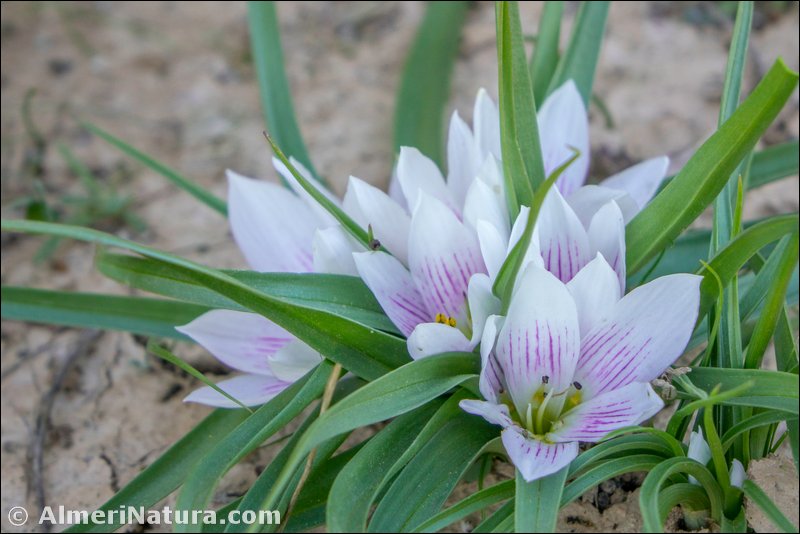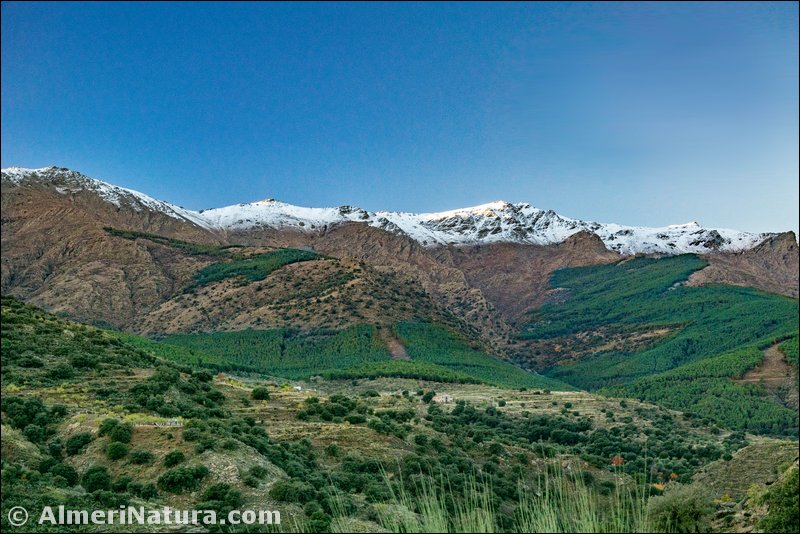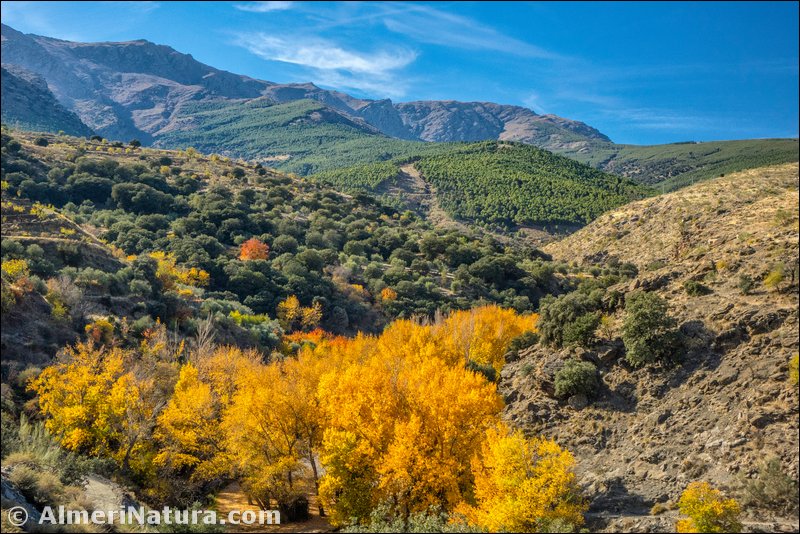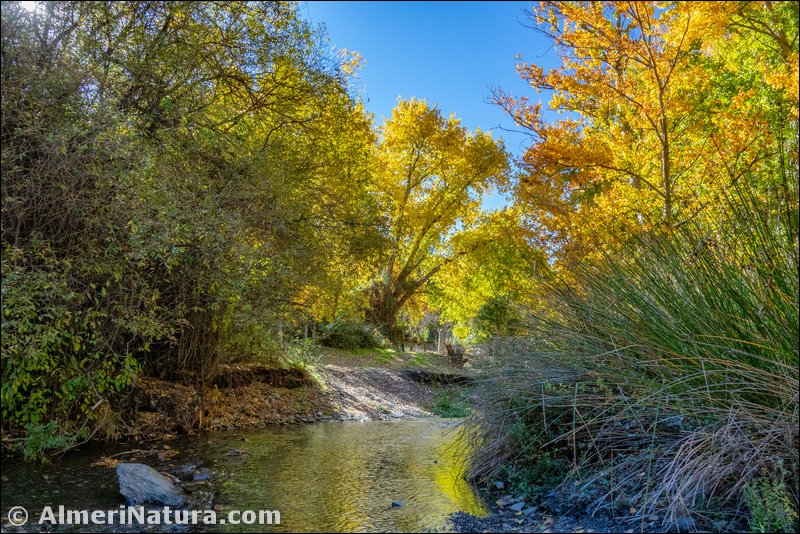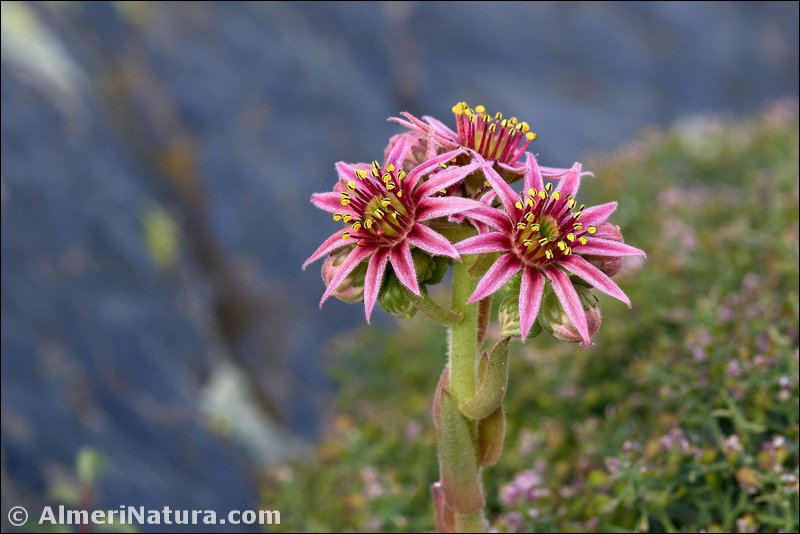The Natural Park of Sierra Maria-Los Velez is located in the north of the province of Almeria, with an area of 22,562 ha. and maximum height of 2,045m. It covers the municipalities of Chirivel, Maria, Velez-Blanco and Velez-Rubio. The climate is Mediterranean: dry in summer with high day and low night temperatures, wetter in winter with low temperatures and frequent snowfall.
The geological characteristics of the park allow the existence of a considerable variety of microclimates and biotypes in which many different plants grow. The great biological diversity is sheltered by an extensive forest in which native larch pine (Pinus nigra) mix with reforestations of Aleppo pine (Pinus halepensis). There are references to the presence of this species of pine tree all over the Los Velez area from before the 16th century. In addition it has the “Dehesa de la Alfaguara”, the only hill with a mixture of larch pines and holm oaks which have never been cut down or ploughed up (except for two small stands reforested by man). There are also references to the presence of pine pollen from prehistoric times, found in the Cave of Ambrosio (Velez Blanco). In the reforestations, maritime pine (Pinus pinaster) was used at medium heights, such as the Umbria de la Virgen (Maria), the area where this species has developed most vigorously.
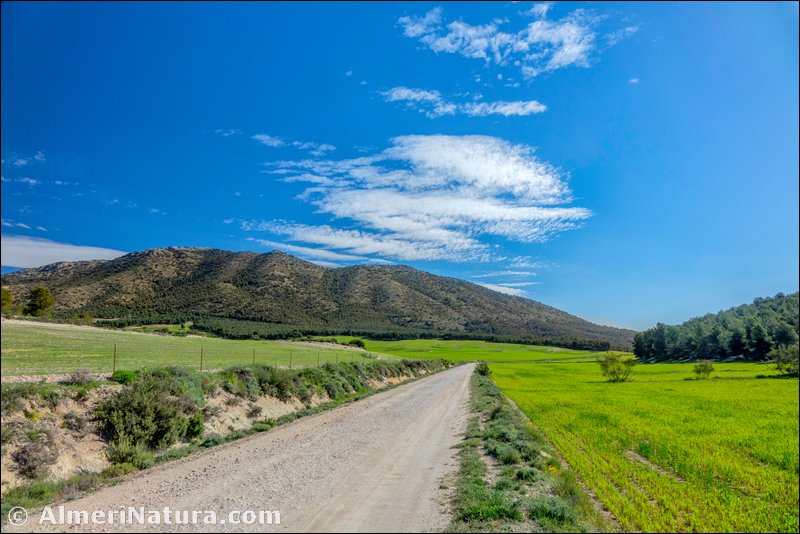 The areas closer to valleys become sparse forests of holm oaks (Quercus rotundifolia). Among them grow other typically Mediterranean species like rockroses (Cistus sp.), lavender (Lavandula sp.), jerusalem sages (Phlomis sp.), rowan trees (Sorbus sp.), kermes oaks (Quercus coccifera), gall oaks (Quercus faginea), rosemary (Rosmarinus officinalis), and thyme (Thymus sp.). In higher areas only species adapted to extreme temperatures and scarce rainfall can grow, which is why the ground vegetation cover is scarce. The most characteristic species here are juniper (Juniperus communis) and creeping juniper (Juniperus sabina), although on the summits the blue broom (Erinacea anthyllis) is more common. Other species found on the summits are: maple (Acer sp.), barberry (Berberis hispanica), hawhorn (Crataegus monogyna), broom (Genista longipes) and a spiny brassica (Vella spinosa). In this rich region, a great botanic biodiversity exists. There are several endemic plants and many other species with a very restricted distribution area, like Arenaria suffruticosa, Athamanta hispanica, Centaurea mariana, Lythrum baeticum, Platycapnos saxicola, Saxifraga camposii subsp. leptophylla. or Sideritis stachydioides.
The areas closer to valleys become sparse forests of holm oaks (Quercus rotundifolia). Among them grow other typically Mediterranean species like rockroses (Cistus sp.), lavender (Lavandula sp.), jerusalem sages (Phlomis sp.), rowan trees (Sorbus sp.), kermes oaks (Quercus coccifera), gall oaks (Quercus faginea), rosemary (Rosmarinus officinalis), and thyme (Thymus sp.). In higher areas only species adapted to extreme temperatures and scarce rainfall can grow, which is why the ground vegetation cover is scarce. The most characteristic species here are juniper (Juniperus communis) and creeping juniper (Juniperus sabina), although on the summits the blue broom (Erinacea anthyllis) is more common. Other species found on the summits are: maple (Acer sp.), barberry (Berberis hispanica), hawhorn (Crataegus monogyna), broom (Genista longipes) and a spiny brassica (Vella spinosa). In this rich region, a great botanic biodiversity exists. There are several endemic plants and many other species with a very restricted distribution area, like Arenaria suffruticosa, Athamanta hispanica, Centaurea mariana, Lythrum baeticum, Platycapnos saxicola, Saxifraga camposii subsp. leptophylla. or Sideritis stachydioides.
The bird diversity in this park is one of its greatest assets, with more than 100 species living permanently or temporarily here. With respect to other vertebrates their diversity is not so spectacular.
The rock paintings in the Cave of los Letreros are one of the most important acheological treasures in Almeria. In fact, a symbol that identifies this province, the Indalo, is one of the paintings depicted on its walls. It is located in the municipality of Velez-Blanco, under the shelter of a rockface in Sierra de Maria. The Indalo and another of the most characteristic paintings, known as “El Brujo”, are outstanding examples of the typical rock art in Eastern Spain. The cave is part of the “Arte rupestre del arco mediterraneo de la Peninsula Iberica”, designated by UNESCO as a World Heritage Site in 1998.
(Adapted and translated from Wikipedia)
The combined maritime-terrestrial Natural Park of Cabo de Gata-Nijar, the first reserve of this type in Andalucia, is one of the Spanish natural areas given a greater number of natural as well as cultural protection statuses. It extends over an area of 37,500 ha on land and 12,012 ha of the sea. The protected maritime strip is over 63 km long, between the beach of Las Salinicas in Carboneras and Rambla de Aguas in the City of Almeria. It also extends up to one nautical mile out into the Mediterranean Sea, being the largest marine protected area of the European continental coast.
It is one of the most arid areas in Europe and one of the few protected sites of volcanic origin. Its 63 km of coast hosts cliffs and seabeds listed as being among the best on the Spanish Mediterranean coast.
The fauna and flora of the park include an abundance of species of special interest because they are endemic, have a restricted distribution, are threatened with extinction, or are essential for the normal development of the ecosystem.
The catalogue of plants is made up of more than 1,000 terrestrial and about 250 marine species, amongst which some of special ecological importance can be found, such as Posidonia oceanica. These plants are exclusively endemic to the park: Antirrhinum charidemi, Ulex canescens y Verbascum charidemi. As to the fauna, the park boasts an impressive diversity of terrestrial and marine invertebrates. Among the terrestrial invertebrates there are more than 20 endemic species, and among the marine, most of the described taxonomic groups are represented .
The geographical location and climate here, means that in the protected maritime strip, marine species co-exist that usually live on one side or the other of the virtual border created by the sea currents between Cabo de Gata and North Africa. This does not take place anywhere else on the planet.
The park’s physical environment is a result of a rather arid climate, its proximity to the sea, and the volcanic geology with later sedimentary deposits. Its great value lies in the variety of interesting resources from the scientific point of view and their accessibility, which makes observation and study considerably easier.
Temperatures are stable all year round with an average of 18-20°C. Variations from the coldest and warmest months are no higher than 15°C. Summers are warm with an average temperature of 26°C and winters mild with average temperatures of 12°C. Frosts rarely occur.
(Adapted and translated from Wikipedia)
Sierra Nevada is a mountain massif within the Betic group, or more exactly, the Penibetic system. It extends through the central-south east of the province of Granada and part of the south west of the province of Almería. In 1986 it was declared a «Biosphere Reserve» by UNESCO. In 1999 a great part of the territory was declared a National Park for its botanic, landscape and natural values. It is the highest mountain massif in Europe after the Alps. Its maximum height is reached at the Peak of Mulhacen 3,482m. In Almeria the maximum height is the Peak of El Chullo at 2,610m. It has a length of almost 80 km and a width of 15 to 30 km covering an area of more than 2,000 km². Most of it is within the National Park of Sierra Nevada, a total of 86,210 ha. Another 86,000 ha belong to the surrounding Natural Park.
Sierra Nevada, along with the Betic ranges, was formed during the alpine orogeny in the Tertiary era. Due to its isolation and altitude, since the end of the Würm glaciation, the massif has remained as a refuge to countless plants and endemic species, not normally found in Mediterranean latitudes. There are 66 endemic vascular plants and another 80 animal species, which represent the greatest biodiversity in the Iberian Peninsula and Europe. In total the number of higher plants is around 2,100, which is a quarter of all known species in Spain and a fifth of those in Europe.
The origin of this unusual number of endemic species present in the massif was in the Tertiary, almost two million years ago. With the end of this era and the arrival of the Quaternary, the climate all over Europe suffered a progressive drop in temperature that allowed plant species from northern and artic latitudes to advance towards the South of Europe and occupy a great part of the inland and high areas in the Iberian Peninsula. The end of the Würm glaciation and the arrival of the Holocene period marked the beginning of a progressive rise of temperatures. These Nordic species found refuge in the massif and progressively adapted to the characteristics of the climate, such as summer drought. In that way, many species have developed their own characteristics or even developed independently due to their isolation. That is why there are more endemic plants here than in Belgium, Germany, Austria, Great Britain, Sweden, Denmark, Czech Republic, Slovakia, and Poland together.
(Adapted and translated from Wikipedia)
The following plant are exclusively endemic to Sierra Nevada:Agrostis canina subsp. granatensis, Agrostis nevadensis, Alyssum nevadense, Androsace vitaliana subsp. assoana, Arenaria funiculata, Armeria splendens, Artemisia granatensis, Campanula rotundifolia subsp. willkommii, Carduus carlinoides subsp. hispanicus, Chaenorhinum glareosum, Draba hispanica subsp. laderoi, Festuca pseudeskia, Hormathophylla purpurea,, Jasione amethystina, Leucanthemopsis pectinata, Linaria aeruginea subsp. nevadensis, Noccaea nevadensis, Pimpinella procumbens, Potentilla nevadensis, Ranunculus acetosellifolius, Ranunculus cherubicus subsp. girelai, Reseda complicata, Sagina saginoides subsp. nevadensis, Scorzoneroides microcephala, Viola crassiuscula.



